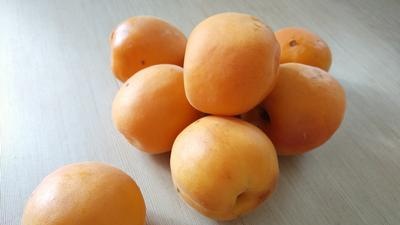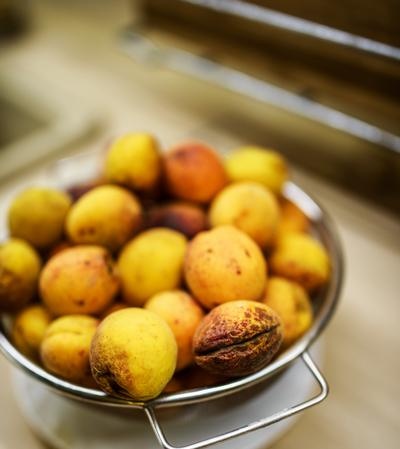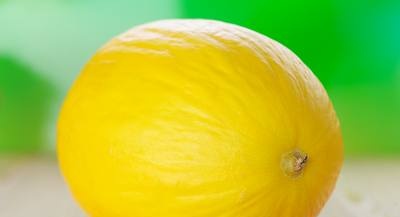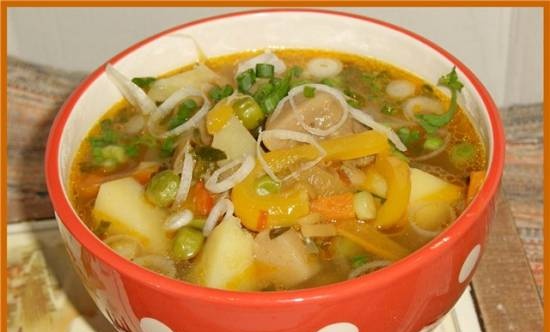|
 It's not just sugar that is sweet. There are vegetable proteins a thousand times sweeter. But for now, humanity is supplemented by ordinary sucrose. It's not just sugar that is sweet. There are vegetable proteins a thousand times sweeter. But for now, humanity is supplemented by ordinary sucrose.
The first industrial refined and sand gave people sugarcane... Later "entered the arena" sugar beet... Together they serve the sweet tooth of the planet, bringing them seven million tons of snow-white product annually. In some places in the tropics, palm trees are used instead of cane - wine or sugar. In the temperate zone, maples are for the same purpose.
In Central Asia, in previous years, the missing energy source was replaced by grapes and apricots. There is more sugar in grapes than in beets. It happens up to 30 percent (in beets, on average - 18). In apricot - up to 23! A raisins and dried apricots - just a concentrate of sweets. In the deserts, when there was no apricot, they got along with what was at hand - camel thorn sugar crystals. They were rammed from the trunks onto the tarp.
Sugar has had a serious competitor since the Middle Ages - honey... They ate more honey. It was half, ten times cheaper. And even at the end of the last century, the press urged: why are you chasing expensive sugar? Eat your own better, Russian honey! Do you think that since he is the food of the poor, then it is worse?
 Now the roles have changed. The world has cooled to honey. Humanity eats it twenty times less than sugar. And connoisseurs warn: sucrose is empty calories. Don't be zealous. Whether it's honey: there is glucose, and fructose, and all kinds of other things. Now the roles have changed. The world has cooled to honey. Humanity eats it twenty times less than sugar. And connoisseurs warn: sucrose is empty calories. Don't be zealous. Whether it's honey: there is glucose, and fructose, and all kinds of other things.
What can you say about this? Indeed, you do not need to be zealous. Overeating is always harmful. Not just sugar ...
Travelers have always wondered why in the villages of the Tajiks, even in the smallest garden, many fruit trees are collected, while the apricot grows separately. He has a special place. The apricot orchards are clean, of the same breed. There are no other trees in them. To understand the secret of this preference, one must imagine the conditions in which the Tajiks lived. All around the mountains. They cut off villages from the rest of the world. Transformed them into a lost land. Lacking enough space to plow fields and sow bread, people cultivated something that could mold on rocky slopes - apricot. The sweet, sugary apricot added strength. You can't climb a lot without it.
So apricot became the number one plant. They cherished it like no other tree. They even selected such varieties so that the fruits would not fall to the ground, but dried up on the branches with a ready-made apricot. The only thing that the apricot required for a good harvest was fertilization. Especially nitrogen. Old fences - clay duvali - were used. How they thought of this is hard to say. Maybe by chance? Or intuition helped? However, the choice turned out to be the most successful. The blue-green algae of the gleocaps multiplied in the duals. She was saving nitrogen. Older duvali contained more nitrogen than normal manure.
It is not necessary, of course, to exaggerate the strength and power of the apricot. Man is not the only one who lives. However, let us still recall one story that happened in Kashmir, the main character of which was the apricot. About 30 years ago, the Scottish doctor M. Carrison came to a cozy valley at an altitude of 2000 meters above sea level. He began to treat the mountaineers for tuberculosis, typhoid and diabetes. And he was extremely surprised that he was not invited to the sick from the neighboring Hunz tribe, who live opposite, across the river. Those across the river, according to legend, were the descendants of the soldiers of Alexander the Great. They never got sick with anything. They live incredibly long, 110-120 years. But the air they breathe is the same as that of Carrison's patients. And they drink water from the same river.
Comparing the way of life of both tribes, the doctor came to the conclusion: everything is the same, except for food. The Hunza's diet is downright Spartan. They consume little meat. On holidays. But raw vegetables and fruits are available all year round.Only salt is bought on the side. And most of all they eat apricots. Fresh in August - September. Then dried: dried apricots, apricots. Even a saying has developed, which can be translated something like this:
If you dare to cross
To the unapriced edges
Will refuse to accompany you
Your faithful friend!
The vegetable-apricot diet allows the hunza to stay fit until their old days. Ancient elders perform thousand-kilometer exercises once a year along the Kashmir-Bombay highway and back. On foot, of course.
For fourteen years in a row, a young doctor watched the Kashmiris. Returning to his homeland, he wrote a book. However, no one believed him. Then Carrison organized a grand experiment. Collected thousands of rats, divided them into two groups. Gave different food. He put some on the usual Londoners diet: white rolls, herring, sugar. Others - for apricots and dried apricots. The English diet did not save the four-legged from disease. Apricot provided full health to his patients.
Of course, this case alone does not prove anything yet. And apricot cannot be considered a panacea for all ills.
 But here's what's great. Every few years humanity convenes international apricot congresses. Notice, not an apple tree, not a pear, not a cucumber or tomato. Namely, apricot. The sixth was held in Armenia in 1977. One of the presenters opened the veil of mystery over this tree. But here's what's great. Every few years humanity convenes international apricot congresses. Notice, not an apple tree, not a pear, not a cucumber or tomato. Namely, apricot. The sixth was held in Armenia in 1977. One of the presenters opened the veil of mystery over this tree.
- The phenomenon of apricot, - he said, - is that it contains almost all known vitamins: A, B1, B2, B6, B15, C, P, PP, K, H ... And what is especially important - their number is large: the daily rate for a person. And one more thing: when dried in dried apricots and apricots, the content of nutrients even increases. True, you need to know where it is better to plant apricots.
In the mountains, vitamins accumulate twice as much as in the lowlands.
However, international and all-Union congresses on apricot are not organized for the glorification of this masterpiece of the plant world. Worried about the future. There are serious reasons for concern. Over the past twenty years, the area under the multivitamin tree has slightly increased. In Greece, in Austria and other countries, it decreased by half and three times.
Cause? There are several of them. And the main thing is too early flowering. Apricot is a resident of the center of Asia. Its element is hot mountains with a harsh, dry climate. And in Europe, gardeners offer him something completely different. The climate is milder and cooler. Using the power of genetics and selection, enormous fruits are obtained here, two to three times more than in Fergana. But the taste is not the same ... You cannot make a good apricot or dried apricots out of them. And most importantly, too early awakening from winter peace. Flowers suffer from this, and what is even worse - a stem, a tree trunk. The bark cracks, pathogenic fungi and viruses penetrate. The trees are drying up. And the further, the more.
Here the sure cure for diseases comes to mind - to find wild relatives and correct cultivars with their help. Botanists had this idea back in the thirties. And the first, it seems, was the famous botanist M. Popov who started looking for savages. He went to the vicinity of Alma-Ata, where a lot of wild apricots grew.
They looked great. They did not show the slightest tendency to dry out. On the contrary, in comparison with all other brothers, they seemed fresher, greener, more elegant. Even very close to the city, where the cattle were always grazing and gnawing all the trees in the path, the apricots stood untouched. There were thorns on the apricot trunks. Local residents noticed this long ago and turned it to their advantage. They use a multivitamin tree to protect their gardens. They sow seeds around the garden, and a reliable fence grows.
The fashion for apricot fences was adopted in other places as well. Very often these trees are lined up along the roads of Ukraine. You go by, stop, eat orange fruits - and so on. And in the Salsk steppes, on the Gigant state farm, before the war, forest belts were planted to protect the fields from the wind. Many are from a single apricot. The tree is drought-resistant. It grows well in the steppe.
As for wild apricots, I. Michurin was also interested in them. He learned that in one of the Mongol monasteries a large-fruited and very frost-resistant variety grows: a triple hybrid between Manchu, Siberian and ordinary species. Michurin asked a familiar officer, Captain Kurosh, to get some bones. Kurosh understood how difficult it was to penetrate the walls of the monastery. Therefore, he went for a trick. He persuaded the locals and played a chase scene.
On the appointed day, the monks saw several co-religionists, screaming, running to the monastery walls. A detachment of Cossacks rushed after them at full speed. The gates were opened, but the pursuers burst in along with the fugitives. The monks were amazed when they saw that the Cossacks, dismounted, began to pick fruits from the trees, hastily gnawed the flesh, and put the bones in their pockets. The officer did the same. Soon Michurin received the desired package. And then new varieties appeared in his garden: Comrade, Mongol, Best Michurinsky and, of course, Kurosh.
These trees endured the harsh climate of central Russia, where apricots had never grown in human memory. True, the taste of the fruit was mediocre. The disciples of the renowned gardener completed his work. And now varieties have been created that are truly juicy and sweet. Only the nucleolus is still incomplete. In most varieties, it is bitter - a memory of wild relatives. Nature deliberately made the nucleoli bitter, otherwise the beast would have snatched them long ago and the species would not have survived.
And the animal world is interested in apricots no less than people. True, everyone has different tastes. Sparrows, for example, specialize in flowers.
 In Ashgabat, they fall on gardens in the spring. First, the flower buds are pecked out, then the petals are cut off, getting to the most delicious - ovaries and nectaries. The petals do not eat, they are thrown, and they fall on the ground like snow flakes. An inexperienced gardener can scold a bird for such arbitrariness and make a mistake. The sparrow in Ashgabat is not harmful, but useful. He is thinning the flowers. Saves gardeners from painstaking work. The remaining flowers will give larger and sweeter fruits, and the tree will not spend extra energy to grow additional cargo, which will then still have to be dropped. In Ashgabat, they fall on gardens in the spring. First, the flower buds are pecked out, then the petals are cut off, getting to the most delicious - ovaries and nectaries. The petals do not eat, they are thrown, and they fall on the ground like snow flakes. An inexperienced gardener can scold a bird for such arbitrariness and make a mistake. The sparrow in Ashgabat is not harmful, but useful. He is thinning the flowers. Saves gardeners from painstaking work. The remaining flowers will give larger and sweeter fruits, and the tree will not spend extra energy to grow additional cargo, which will then still have to be dropped.
The fox specializes in fruit pits. In the Ararat Valley of Armenia, gardeners used to moan from fox invasions. The red-haired "gossip" smells the bones from afar. Digs up the soil and picks out the seed clean. You have to start all over again. In Poland, proteins are specialized in apricots. They also eat bones. And the most annoying thing is that they do it when the fruits are not yet ripe. Therefore, you cannot save them from fans by harvesting early.
And now let's go back to where we started: why did the Tajiks choose apricot from a variety of breeds, and not an apple tree, not a pear or grapes. There is another important reason, besides the above. The favorite of Tajiks is unpretentious. It can grow in the most useless soil (although it also loves fertilizer). Even on pebbles, where no culture is planted at all. Only in the first year after planting it is watered, and then the tree is left to itself.
And it grows in two or three girths! Fruiting up to a hundred years. And what a crown! In a harvest year, thirty poods are collected from it - this is more than 50 buckets. I saw one of these trees, even not very large, at the Pamir biological station in the city of Osh. Under it professor-geographer O. Agakhanyants places his students, who have arrived for practice, for the night. Thirty people can fit under the crown, and there is still room left. The foliage tent serves as a secure roof. And ripe apricots fall almost into the mouths of the resting trainees. True, there is one unpleasant moment in this idyll. Fruits fall at night, rolled under sleeping bags. In the morning, the poor student wakes up wet, soaked in sweet juice ...
Probably, the Tajiks would grow even more apricots if they had more land. But the wheat also needs to be sown somewhere. The solution was found in mixed crops. There is a cornfield under the trees.True, the wheat is not ordinary, but the ancient spelled. More recently, experts denied that spelled was preserved in Asia. In 1952, she was discovered in the distant mountains of Iran. And fifteen years later - here in Tajikistan. It is here that the world's largest array of the oldest apricot trees survived. In the valley of the Isfara River. Between the villages of Nauglem and Vorukh.
Spelled has been sown in Isfara gardens since time immemorial. Why exactly her, and not ordinary wheat, soft or hard? Professor R. Udachin, who discovered this unique garden, explained. Apricot ripens earlier than wheat. People trample the wheat sea and collect orange fruits from the trees. Other wheat would have crumbled long ago. Spelled does not crumble. Another culture would wither in the shade and yield no grain. Spelled gives grain even in the shade! And its neighbor, the apricot, produces the world's best harvest here.
 Unfortunately, the way to Isfara is not close and only a few fans of apricots and dried apricots can visit these interesting places. Another apricot edge is much more accessible - Crimea... At the beginning of our century, when the influx of tourists began to increase, apricot orchards began to grow like mushrooms. And maybe this southern corner would have turned into a continuous apricot, if not for one circumstance. Unfortunately, the way to Isfara is not close and only a few fans of apricots and dried apricots can visit these interesting places. Another apricot edge is much more accessible - Crimea... At the beginning of our century, when the influx of tourists began to increase, apricot orchards began to grow like mushrooms. And maybe this southern corner would have turned into a continuous apricot, if not for one circumstance.
Trees of this fashionable breed were accepted and grew excellently, but the harvest pleased the owners not at all everywhere. Every year they gathered a lot of fruits in Bakhchisarai, in the center of the peninsula, and in the most heavenly place, on the southern coast, where the climate is especially mild, there was nothing to collect. And only in some successful years, after five or six years, orange fruits finally appeared on the branches.
Observant people noticed: perhaps it is best to plant apricots along the Crimean rivers: Kache, Alma, Salgira. We planted rivers from their sources to the sea. Again, the gardeners were out of luck. Those that planted by the sea reaped a meager harvest every five years. The fault was the heavy sea mists that crept along the coast at the very time when the trees were blooming. After the fogs, the fruits were not set.
The situation was even worse in the headwaters of the rivers. The river valleys there narrowed to such an extent that they looked like giant gutters. Their steep slopes went high into the sky. In early spring, in February, and sometimes in January, the gardens bloomed. And at night, an icy wind blew from the snowy peaks of the yayla - the Crimean mountains. With difficulty he squeezed his way through the narrow gutters of the valleys and whistled through the gardens in a draft. What are the apricots here!
Downstream, where the valleys widened, the draft lost its strength and seemed to disappear. This is where profitable gardening began. Our glorious gardener L. Simirenko, who explained all the failures with apricots in Crimea, summed up. Apricot is quite suitable for Crimea, but a good harvest can only be obtained in a few places. And best of all, it bears fruit not in gardens, but in ... cities! Even in the cramped stone buildings and cobblestones, he delivers excellent apricots and dried apricots. These conditions are closest to those stony mountains where apricot originated as a species.
As for the fight against the cold during flowering, the fruit growers are always looking for and looking for a salvation. It would seem that a witty solution was proposed after the war by professor from the Timiryazev Academy P. Shitt. Summer crown pruning. It will delay flowering and eliminate the risk of frost. Alas, when the fruit growers checked the scientist's advice in practice, it turned out that pruned and uncut trees bloom at the same time. As you can see, there are still a lot of unsolved problems.
But not all the trouble with apricot is frost and frost. The misfortunes of this breed are in another. Such a case is told. At the end of the last century, one gardener discovered that many apricot trees in their prime of years turn out to be rotten in the middle of the trunk. He was an observant and intelligent man and noticed that rot is especially rampant where trees are tied with wire. Isn't all evil in the wire?
Maybe it disrupts the main course of life processes in trees? He hurried to the apple trees, which he tied with straw against hares in the same way as apricots.I fastened the straw with the same wire. In places the wire touched the trunk. I cut down one of the apple trees in my hearts. No, in vain he ruined the tree. The trunk is healthy and clean.
Then he remembered that he used the same wire when hanging labels on apricot trees. Checked - about grief! And here the wire did its dirty deed. All trees with tags were sick. However, on some of the seedlings, the tags were not hung on a wire, but on a washcloth or on pieces of twine. With trembling hands, the grower began to examine the wireless apricots. No, and there is rot. Under the string and under the sponge. Only where there were no tags at all, the stems remained healthy.
Such is the story of a century ago. And in 1977, another congress on apricot was held in Yerevan. It again raised the question of tags and labels. Connoisseurs warn in the most serious way. No tags! Do not tie anything to the stems. Don't touch them at all! So that nothing will damage the bark. And so the apricot dries too often. And not all reasons are understood yet.
A. Smirnov. Tops and roots
|
 It's not just sugar that is sweet. There are vegetable proteins a thousand times sweeter. But for now, humanity is supplemented by ordinary sucrose.
It's not just sugar that is sweet. There are vegetable proteins a thousand times sweeter. But for now, humanity is supplemented by ordinary sucrose. Now the roles have changed. The world has cooled to honey. Humanity eats it twenty times less than sugar. And connoisseurs warn: sucrose is empty calories. Don't be zealous. Whether it's honey: there is glucose, and fructose, and all kinds of other things.
Now the roles have changed. The world has cooled to honey. Humanity eats it twenty times less than sugar. And connoisseurs warn: sucrose is empty calories. Don't be zealous. Whether it's honey: there is glucose, and fructose, and all kinds of other things. But here's what's great. Every few years humanity convenes international apricot congresses. Notice, not an apple tree, not a pear, not a cucumber or tomato. Namely, apricot. The sixth was held in Armenia in 1977. One of the presenters opened the veil of mystery over this tree.
But here's what's great. Every few years humanity convenes international apricot congresses. Notice, not an apple tree, not a pear, not a cucumber or tomato. Namely, apricot. The sixth was held in Armenia in 1977. One of the presenters opened the veil of mystery over this tree. Unfortunately, the way to Isfara is not close and only a few fans of apricots and dried apricots can visit these interesting places. Another apricot edge is much more accessible -
Unfortunately, the way to Isfara is not close and only a few fans of apricots and dried apricots can visit these interesting places. Another apricot edge is much more accessible - 


























